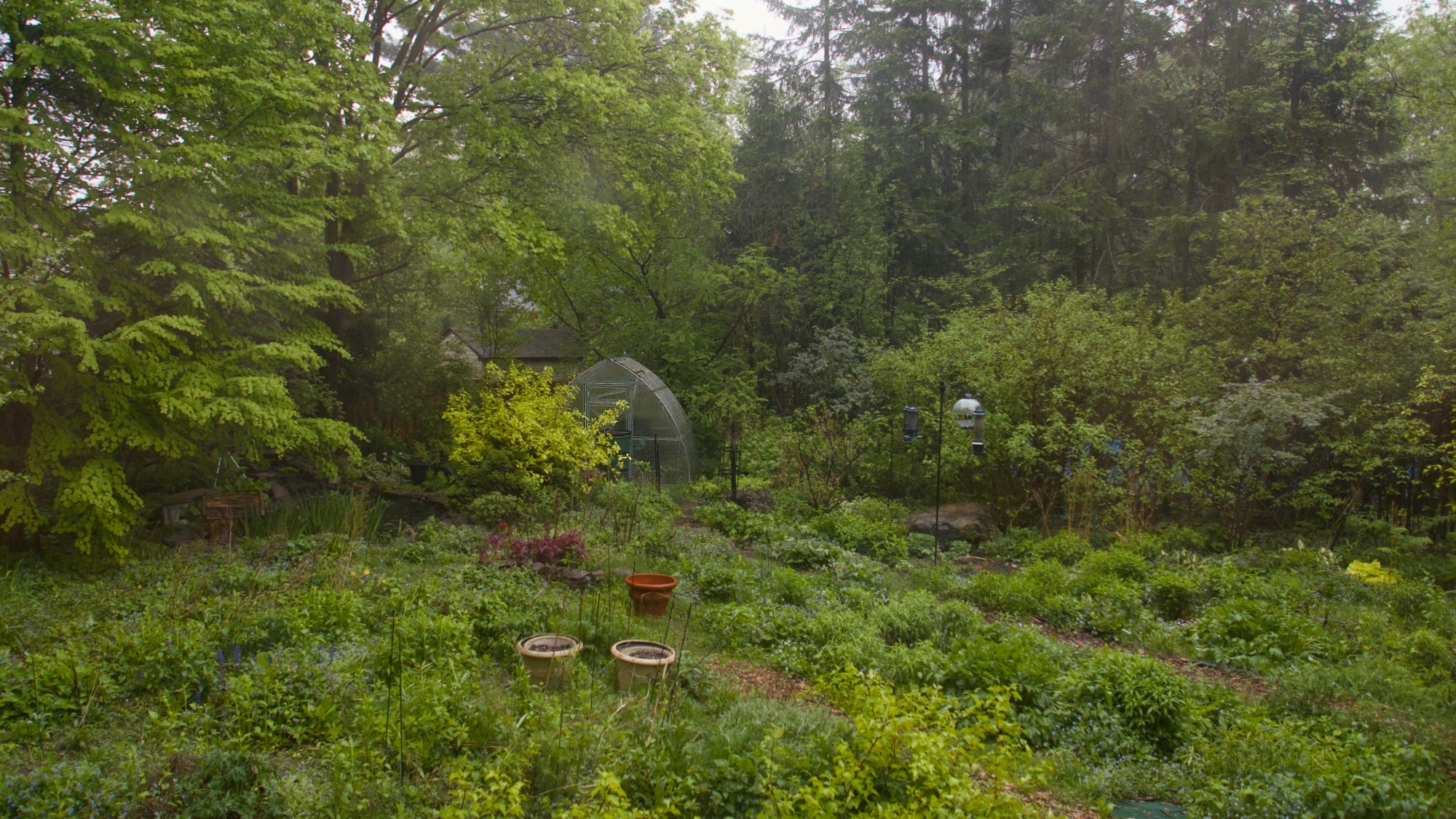I have been somewhat distracted this past week so this will be a short read. There has been exceptionally hot, July weather in May and we have been having our >20 year old garden fence replaced which meant much coming and going and machinery whirring all of which impacts gardening, birds and walking. At the same time, this heat (and my undoubted horticultural skills) have caused seedlings of tomatoes, peppers, aubergines to shoot to the sky. Twice the height achieved most years by this date. Typically about now I would be gradually “hardening off my seedlings” ready to plant out by the end of the month, but there is not much to harden them against when daytime temperatures are getting to 28C … hotter outdoors than even inside the greenhouse should be in a normal year. Then we were visited by a thunderstorm … did no damage, though I scuttled indoors to avoid the blatter. What it did bring was the most splendidly subdued storm light - making a more atmospheric image than simple sunshine … this picture was taken right in mid-blatter:
The fence I mention above was initially installed to keep unleashed dogs out, but over the years it has helped to make our garden nature reserve a success. I know the North American dream is supposed to be unfenced gardens with neighbours waving to neighbors across mown lawns while smoke drifts temptingly from BBQs, but that doesn’t work for us. A fence gives calm privacy while corralling and protecting the native plants and creatures who visit and live well here. On the other hand, it provides a predator-free environment for our rather too many chipmunks. We have at least three separate family groups in different corners of the plot. Certainly they are cute, no denying that, but they are also destructive beasts and we would be happy with fewer. A bit of predation by local Hawks would not be unwelcome.
All of which is to say that for the first time since Whilst Out Walking was first unleashed I don’t have much of a theme for this Sunday. Time has caught up with me. I will work in our garden today and wish you well working in yours.
Meanwhile - here is Mrs Robin. She completed her nest right beside our front door a few days ago and now has at least one blue egg to work with. Her beak is undoubtedly open because of the excessive heat. For the next few weeks we will have to come and go via the garage and try to intercept the mail man and other callers before they get to within a few feet of her nest. She has a quite varied and lengthy repertoire of expletives and she deploys them at full volume if anyone gets close. I spent a happy hour reading around the subject of nesting Robins and found that 75% of fledged youngsters each season do not survive past November. That attrition rate, together with the potential life expectancy of the survivors, means that there is a complete population turnover every six years.
Tiny Wonders
The author of this book review must be about the same age as me and we share a common experience. The book he writes about is probably one that would not get much of a market these days, which is rather sad. He quotes the dedication from the book: “To Sheila and Donn, two small children who wanted to SEE THE INSIDES OF THINGS. It is hoped that the little book may be useful and interesting to youthful inquirers of all ages.” I always wanted to see the insides of things and made a career out of it too.
** This is not a money-making venture and is, and will remain, free to all. My “payment” is simply having interaction with subscribers and followers. So should you be new here, please consider subscribing (never miss a post, delivered with your email, totally secure) or maybe share a link with people you know who like this sort of thing? Thanks for your support …






